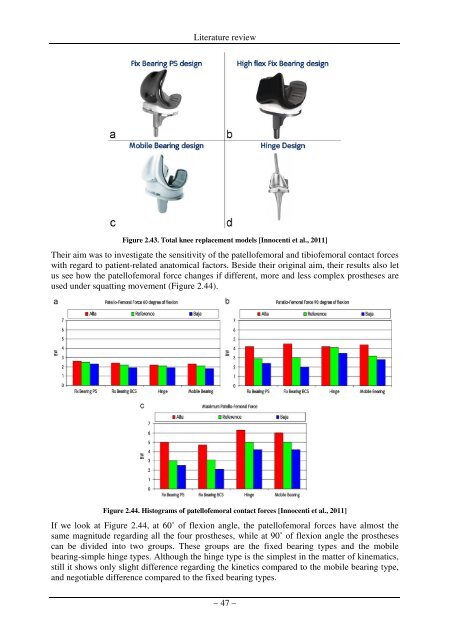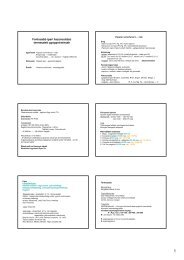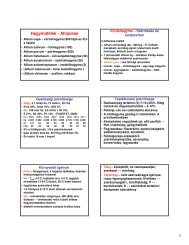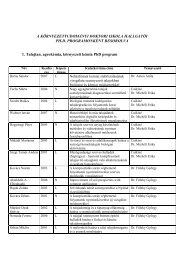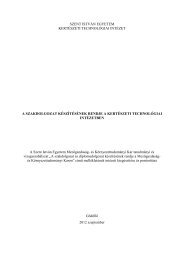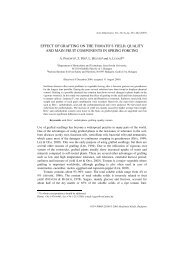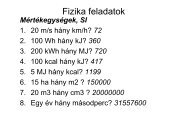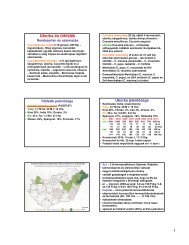PhD Fekete - SZIE version - 2.2 - Szent István Egyetem
PhD Fekete - SZIE version - 2.2 - Szent István Egyetem
PhD Fekete - SZIE version - 2.2 - Szent István Egyetem
Create successful ePaper yourself
Turn your PDF publications into a flip-book with our unique Google optimized e-Paper software.
Literature review<br />
Figure 2.43. Total knee replacement models [Innocenti et al., 2011]<br />
Their aim was to investigate the sensitivity of the patellofemoral and tibiofemoral contact forces<br />
with regard to patient-related anatomical factors. Beside their original aim, their results also let<br />
us see how the patellofemoral force changes if different, more and less complex prostheses are<br />
used under squatting movement (Figure 2.44).<br />
Figure 2.44. Histograms of patellofemoral contact forces [Innocenti et al., 2011]<br />
If we look at Figure 2.44, at 60˚ of flexion angle, the patellofemoral forces have almost the<br />
same magnitude regarding all the four prostheses, while at 90˚ of flexion angle the prostheses<br />
can be divided into two groups. These groups are the fixed bearing types and the mobile<br />
bearing-simple hinge types. Although the hinge type is the simplest in the matter of kinematics,<br />
still it shows only slight difference regarding the kinetics compared to the mobile bearing type,<br />
and negotiable difference compared to the fixed bearing types.<br />
– 47 –


